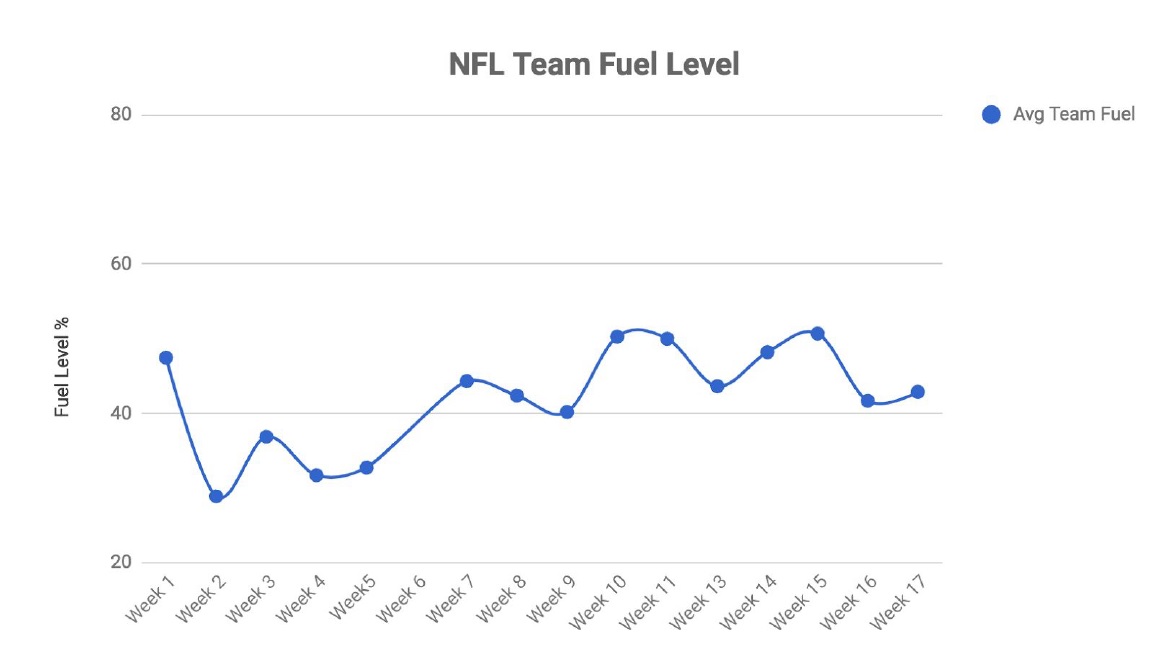An NFL team utilized the ‘Check Game Readiness’ assessment during their season, which provides detailed periodized information and confirmation that weekly regeneration protocols were likely working. It is apparent the intensity of the regular season quickly took its toll on the players’ overall muscle fuel levels, with the concentration of low or ‘alert’ levels in the month of September/October. Overall, the team registered a low (‘alert’) status for 113 out of 180 total scan sessions during this
season.

The effect of early season injuries and taxing travel may have contributed to the team’s overall lower fuel levels in weeks 2-5, a period in which we saw 36 out of 49 scans register a low or ‘alert’ level. It is interesting to note that the lowest team fuel level of the season came on weekly scans before the away game in week 2 (and potentially the worst team performance of the season). This raises the question as to whether the customary regeneration protocols or training loads were altered in any way during this
particular week. The bye week came at an opportune time, providing players the much needed rest and recovery time to improve on game readiness as they headed into the remainder of the season. Team fuel levels responded accordingly during this period, recording one of the highest single week over week increase in scan values of the season. Impressively, the team was also able to overcome the early season low scan values and reach moderately higher levels as the season progressed (as seen in Weeks 10 and
15), a considerable task during the grind of an NFL schedule.
Understanding this inconsistent seasonal pattern and the factors that influence team and individual fuel levels is a difficult task, but a key one nonetheless. It is likely due to a combination of factors including, but not limited to: the impaired ability of injured muscles to store and use fuel, the taxing effects of travel, and the general challenge an NFL season presents.
